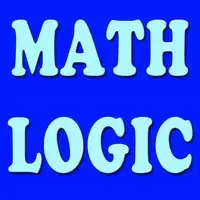Ubisoft has once again activated the Animus, transporting us back to Japan’s Sengoku Period with Assassin’s Creed Shadows. This latest installment features historical figures from 1579, such as Fujibayashi Nagato, Akechi Mitsuhide, and Yasuke—the African samurai who served Oda Nobunaga. Like its predecessors, the game weaves these characters into a narrative blending fact and fiction, exploring themes of revenge, betrayal, and murder. However, it’s worth noting that while Yasuke is a real historical figure, the idea of him needing to kill to gather XP for a gold-tier weapon is purely a creative addition by Ubisoft.
Assassin’s Creed is renowned for its historical fiction, using gaps in history to craft a science fiction conspiracy tale about a secret society vying for world domination through the mystical powers of a pre-human civilization. Ubisoft meticulously researches to create immersive open-world environments, but these are not history lessons. The developers frequently alter historical facts to better serve the game’s narrative.
Below, we explore ten instances where Assassin’s Creed has creatively rewritten history.
The Assassins vs Templars War

The conflict between the Order of Assassins and the Knights Templar is entirely fictional. Historically, there is no evidence of a war between these groups. Both organizations existed during the Crusades, but their ideological opposition is a creation of the game. The Assassins were established in 1090 AD, and the Templars in 1118 AD, with both disbanding by 1312 AD. The idea of a centuries-long conflict between them is a narrative device used by Ubisoft.
The Borgias and their Superpowered Pope

In Assassin’s Creed 2 and Brotherhood, the Borgia family, led by Cardinal Rodrigo Borgia (Pope Alexander VI), is portrayed as the Templar Order’s Grand Master. The games depict a plot involving the Apple of Eden and a pope with god-like powers, which is fictional. Historically, the Templars did not exist during the late 1400s, and the Borgias, while controversial, were not the villainous figures the games suggest. Cesare Borgia, portrayed as a psychopathic leader, was in reality a more complex figure, with Machiavelli even considering him a model ruler.
Machiavelli, Enemy of the Borgias

Niccolò Machiavelli is shown as Ezio’s ally and leader of the Italian Assassin’s Bureau in Assassin’s Creed 2 and Brotherhood. However, Machiavelli’s real-life philosophies and actions suggest he would not align with the Assassins’ creed. He had a nuanced relationship with the Borgias, serving as a diplomat in Cesare’s court and admiring Rodrigo’s cunning, which contrasts with the game’s portrayal.
The Incredible Leonardo da Vinci and his Flying Machine

Assassin’s Creed 2 features a strong depiction of Leonardo da Vinci’s charisma, but the game alters his timeline to suit the narrative. In reality, da Vinci moved from Florence to Milan in 1482, not Venice as shown in the game. While the game brings to life many of da Vinci’s designs, such as a machine gun and tank, there’s no evidence these were built. The flying machine used by Ezio is inspired by da Vinci’s designs, but there’s no record of it ever flying.
The Bloody Boston Tea Party

The Boston Tea Party, a non-violent protest during the American Revolution, is depicted as a violent event in Assassin’s Creed 3. The game’s protagonist, Connor, kills multiple British guards during the protest, which contradicts historical accounts of the event. The game also attributes the planning of the protest to Samuel Adams, despite historians having varied opinions on his involvement.
The Lone Mohawk

Connor, the protagonist of Assassin’s Creed 3, is a Mohawk who fights alongside the Patriots, despite the Mohawk people being allied with the British during the Revolutionary War. While there were rare instances of Mohawks fighting against the British, such as Louis Cook, Connor’s alignment with the Patriots is a creative "what if" scenario explored by the game.
The Templar Revolution

Assassin’s Creed Unity portrays the French Revolution as a Templar conspiracy, which simplifies the complex causes of the revolution, including famine and social unrest. The game suggests the Templars manufactured the food crisis, which historically was caused by natural disasters. Additionally, Unity focuses heavily on the Reign of Terror, presenting it as the entire revolution rather than just one phase.
The Controversial Killing of King Louis 16

The execution of King Louis 16 in Assassin’s Creed Unity is depicted as a close vote swayed by a Templar, which is inaccurate. Historically, the vote was a clear majority in favor of execution. The game also downplays the King’s attempt to flee to Austria, which contributed to his treason charges and widespread public anger against the aristocracy.
Jack the Assassin

Assassin’s Creed Syndicate reimagines Jack the Ripper as a rogue Assassin, trained by Jacob Frye, who takes over the London Brotherhood. This narrative diverges from the historical Jack the Ripper, a notorious serial killer whose identity and motives remain unknown. The game’s story of initiates disguised as prostitutes attempting to stop him adds a fictional layer to the already mysterious figure.
The Assassination of the Tyrant Julius Caesar

Assassin’s Creed Origins presents Julius Caesar’s assassination as a battle against a proto-Templar, which oversimplifies the historical context. Caesar was a popular leader who advocated for land redistribution, contrasting with the game’s portrayal of him as a tyrant. The game also misrepresents the aftermath of his assassination, which historically led to civil war and the rise of the Roman Empire.
The teams behind Assassin’s Creed strive to create immersive experiences filled with historical elements, but these are often creatively altered. This is part of the charm of historical fiction, allowing players to explore "what if" scenarios within a rich, detailed world. What are your favorite examples of Assassin’s Creed bending historical truth? Let us know in the comments.








